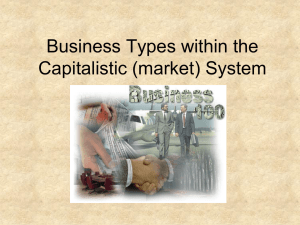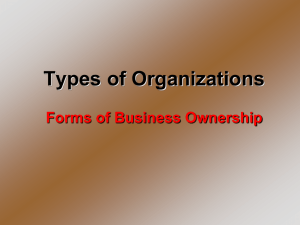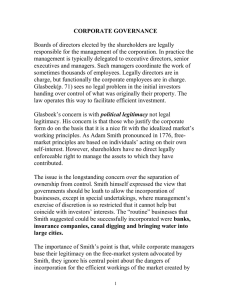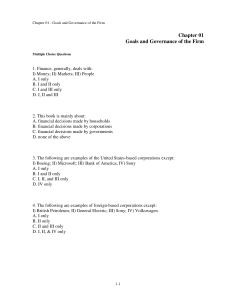11a
advertisement
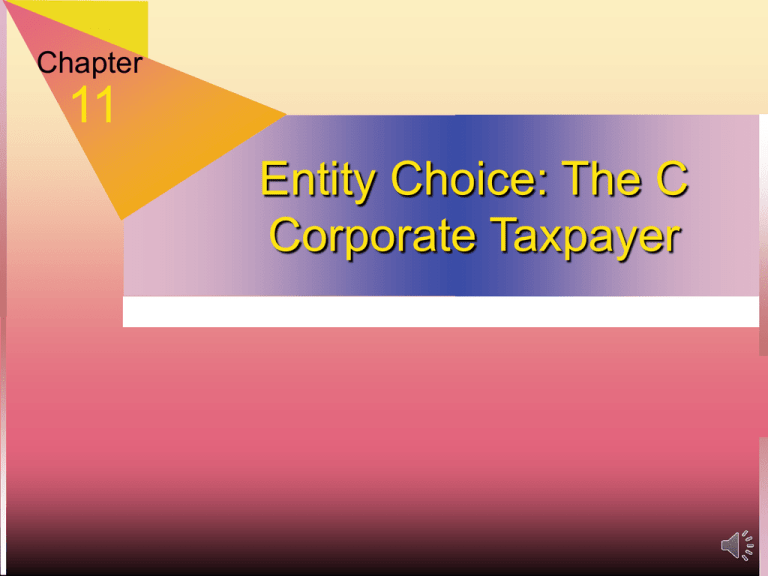
Chapter 11 Entity Choice: The C Corporate Taxpayer Characteristics of a Corporation Limited liability of shareholders – Note, however, that owners of closely-held corporations often are required to sign personal liability on bank debt. – Most important protection is against “unforeseen” liabilities. – Risk is further reduced by dividing corporate assets among multiple entities (e.g., subsidiaries). Unlimited life (e.g., corporation does not end upon death of founding shareholders) Centralized management Free transferability – Closely-held corporations can restrict sale outside exiting shareholder group. – Even without restrictions on sale, it is often difficult to find buyers for stock in closely held corporation. Distributions to Investors – Tax Consequences Interest payments: Deductible by corporation; Taxable to recipient at ordinary tax rate. Salary/wages to shareholders: Deductible by corporation; Taxable to recipient as ordinary income; Subject to employment taxes as well as income tax. Distribution of profits to shareholders: Not deductible by corporation; Taxable to shareholders at preferential rates (0-23.8%). Entity Choice: Conduit entities do not have this double tax issue. Distributions to Investors – Issue of Double Tax Nondeductibility of dividends makes paying dividends hard to explain = expected by investors even though double tax. One result is the high leverage of many corporations, because interest expense is deductible. Investors may prefer that the corporation keep the funds and reinvest them; sell stock for a capital gain in future = growth stock. Double tax issue is less significant with relatively low dividend tax rate.
